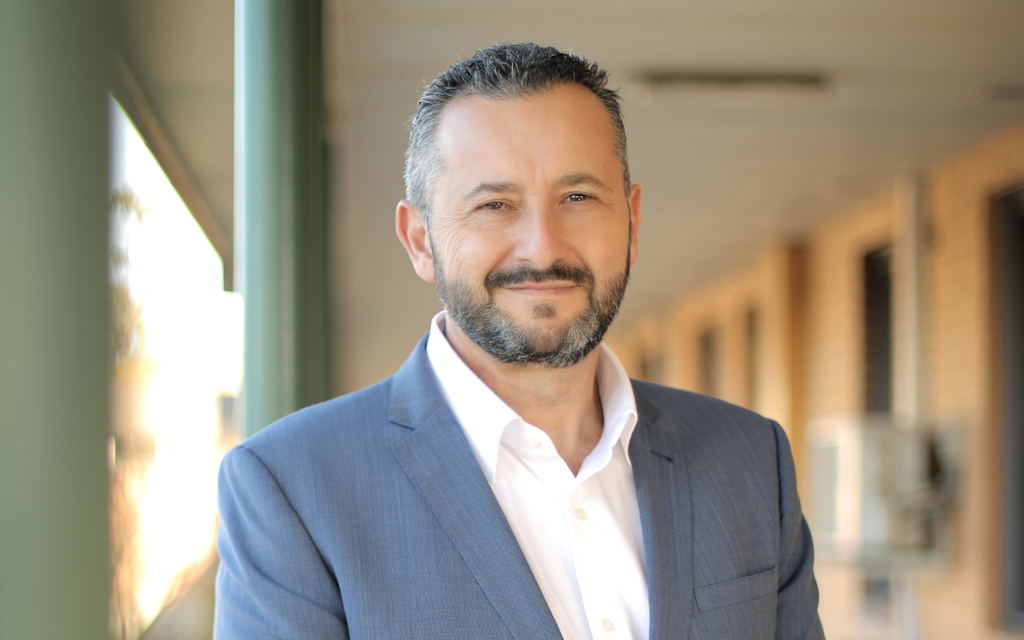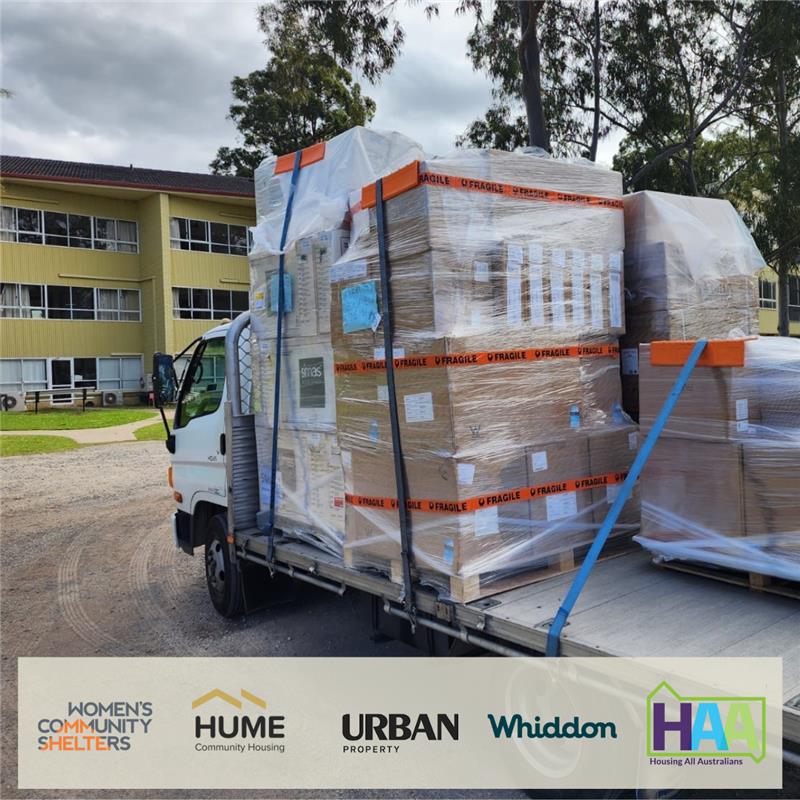Kindness and corporate excellence – Whiddon CEO details wins all round with shift into transitional housing for vulnerable older women
Last updated on 12 August 2025

In an ever-changing aged care sector, providers and front-line staff are no strangers to pivoting quickly. As with the current reform act changes, from implementation date to currently unfolding new rules underpinning interpretation, many have felt the frustration of pulled focus to manage bureaucracy, rather than pouring time and effort into excellence of care. Chris Mamarelis, CEO of Whiddon, shares that even within the complexity of hard-decisions, need, regulation and a changing sector, it’s possible to do incredible good alongside unexpected allies. With transitioning one of their former aged care homes into temporary housing for vulnerable women over 55, Whiddon and collaborators are soon to provide 28 extra beds per night to house some of Australia’s most in need women over 55.
Four years ago, the Whiddon executive team had a hard decision to make. One of their five buildings wasn’t allowing them to provide the standard of care that they strive for. Mamarelis explains that whenever he’s making decisions about a home’s future he applies the “Would I send my mum here?” approach, a powerful and illuminating tool to gauge which way to head corporately and humanly. While the demand for aged care beds is only increasing, the answer to Mamarelis’ question was a “no” and subsequently, the decision was to vacate the building, as it wasn’t fit for purpose in aged care.
As Mamarelis explains, “Whiddon’s strategy is not to be the biggest but the best.” He continues, “we want to grow the quality of care, and the quality of delivery.”
Instead of doubling down on a fit that wouldn’t support the quality standard of aged care, the Whiddon leadership team knew the building could be a resource they could pivot to solve another need.
In making the decision to de-active a poor fit building for aged care, the Whiddon team pivoted the possibilities of it as a resource. Mamarelis shares that in meetings around the board-room table, it was unanimous that, “it would be a crime to leave it vacant.” Everyone in the room could feel that there was something incredible this building could be used for. The building had “useful bones, it has a wonder to it, we knew it was a great resource.” While Whiddon’s team continues to explore other opportunities to build more homes and beds for aged care, in the immediacy of working to put the building to use, they learnt about and investigated Australia’s other concurrent crises, particularly that of housing affordability.
Mamarelis speaks of hearing first-hand from aged care residents, that while qualifying for aged care, have also been caught up in the housing crises prior to entering RAC. Seeing the negative impact on the community they work hard to engage with and the joy that comes from a stable home and care, the Whiddon team saw an opportunity to lean into providing a solve in this space.
Mamarelis is honest that it took time, effort and a unified commitment from the board and the Whiddon wider employee base to pursue this option. Yet from a place of passion and perseverance the team was bolstered to keep going, “we had the appetite for something real, and just started talking to people, we met with many organisations over the years, and suddenly it came together.”
He says that when they came into contact with Housing All Australians (HAA), a not-for-profit in the housing space, the pieces clicked into place. They had done projects like this before, transitioning a building function into new temporary housing.

HAA connected in other organisations like Women’s Community Shelters, Urban Property Group and Hume Housing to approach this project as a coalition, providing work pro-bono and leveraging vastly different skills and experiences to get the project off the ground, and delivering it to impact.
It is critical to note that other providers such as Uniting ACT.NSW, and multiple government bodies who have been closely tracking the human impact of the housing crises. Woman are disproportionately represented in those exposed to vulnerable housing situations. With that vulnerability comes a host of compounding factors such as likelihood of protracted abuse, financial vulnerability and deteriorating mental and physical health conditions. In providing preventative care in the form of safe and secure temporary housing, many can be given the opportunity to get back on their feet, become financially independent and remain healthier for longer, reducing the likelihood of entering aged care before they wish. Preventative measures are powerful in not only providing resources to the people that need it most but also positively alleviating resource drain on the already stretched sector of hospital and aged care.
From first discussions with Housing All Australians to the opening date of September 15 of this year, Mamarelis gauges it’s been about 18-24 months of collaborative work.
He’s transparent, “it’s taken time and a willingness of the various stakeholders to come together, it hasn’t always been easy, we’re all different organisations running our individual operations.”
The team had to overcome a huge hurdle early on with zoning. And while this challenge may have made another CEO have vertigo, the coalition of stakeholders leaned in. With a responsive NSW government, the project received the go-ahead with a change to the zoning law permitting transitional housing, through the introduction of new “meanwhile use” legislation.
Underpinning the desire to lean into making the building a powerful resource for the community is the heartbeat of Whiddon. Mamarelis advocates, “You do need a collective vision to drive it [the project], it’s a journey but our board was incredibly supportive on this pathway.” He encourages all CEOs and executives taking on a project like this, “The endgame is important, it has kept us focussed.”
Mamarelis explains that “With 24 homes across Australia, we don’t operate in isolation, core to our Australian strategy is to embed into the community. We can’t serve the community with a vacant building, we had to do good with it and play our part and do our bit.”
Importantly Mamarelis encourages providers to leverage the passion for change within the organisation. With understandable frustration across the sector at reacting to top-down strategy, like compliance regulation, to bring about quality of care and solves for vulnerable Australians, Mamarelis highlights, “we don’t have to wait for Government to make a difference.”
The building’s transition into a temporary housing for vulnerable women of 55 will be symbiotically beneficial for both those staying in the home and the aged care facilities of Whiddon. The Whiddon executive team, managers and front-line staff have all voiced an excitement about the opportunities for all come September 15. Core to anyone getting back on their feet is safe accommodation and meaningful employment. With over 500 residents, across 4 large homes, with kitchens, laundries, support services and countless other disciplines that require staff, there is a huge opportunity for the women housed in the transitional home to step into training if they so choose.
Mamarelis and the Whiddon team have already prepared disciplines to be ready to train and upskill any women that would choose to step into that opportunity. Working together with Women’s Housing Shelters, “it’s a great opportunity to support the clients who are eager to enter into career pathways and re-skilling, Whiddon can offer training and support.”
On the flip-side he notes a clear situation for many providers, “there’s a workforce crisis in aged care.” From a business point of view, doing the “right thing”, and doing “your part” can have compounding beneficial consequences. Whiddon is privileged to offer the possibility of purpose, dignity and independence through meaningful and gainful employment, and directly tackle, however small to start, a sector-wide crisis of aged care workers. The wins are all-round and shared.
It is this creative thinking, benefitting all parties, that will go a long way to tackle the multiple crises in Australia. From housing the most vulnerable, and providing support to the people that need it most, varied positive consequences can abound. From an increased tax base, improved health statistics in a community, reduced strain on health and aged care sectors, and a labour increase for those strained sectors, there are positive implications for the nation at large. Doing the “right thing”, with a powerful positive impact for all, is a possibility for many more companies out there.